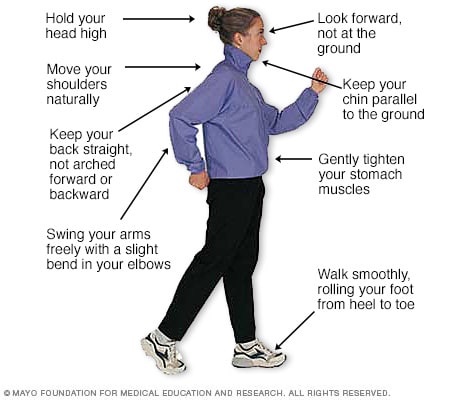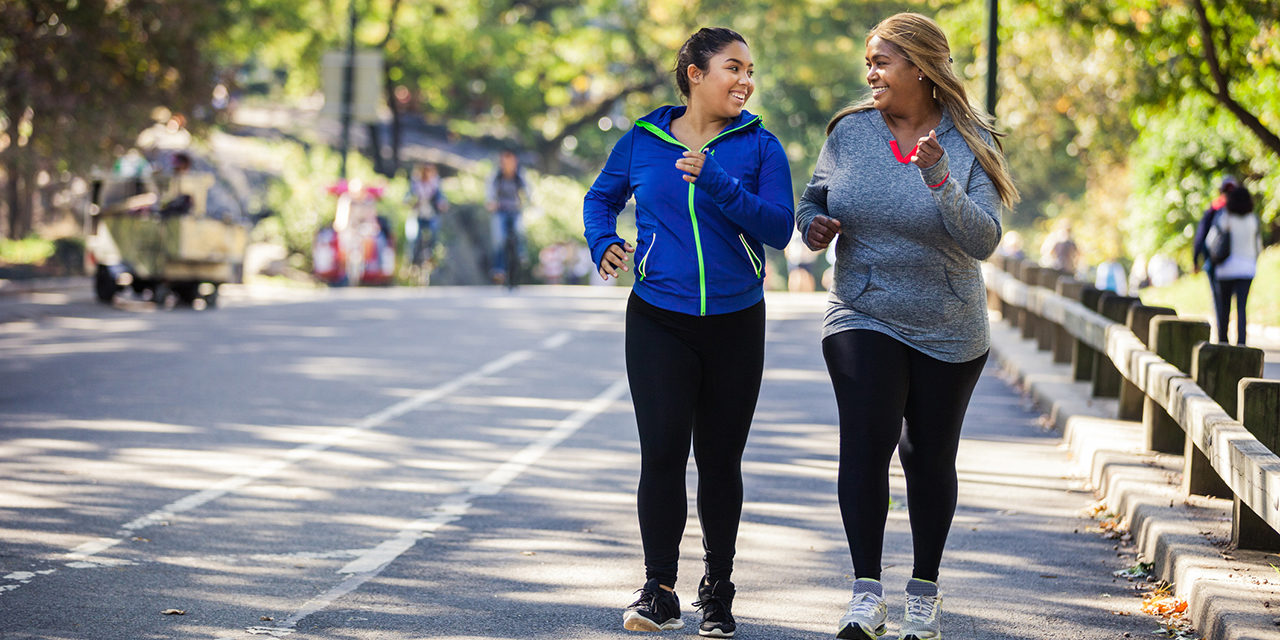It might be the most underrated workout of them all, but health and fitness experts are all endorsing walking – yes, walking – as one of the best overall regular exercises you can do.
Taking a daily walk can deliver considerably more health benefits that you might expect.
Walking for 30 minutes a day can offer some serious – and also unexpected – benefits. Walking is not just a great low-impact form of cardiovascular exercise, giving you a good physical boost, it can also significantly improve your mental and emotional health, and help with every wellness goal from lowering stress to improving sleep.
“Not many people recognise walking as a real workout. Perhaps it’s too easy, too common, too enjoyable, or too relaxing to be considered a serious form of exercise,” said Michael Lam MD, MPH, ABAAM, a physician specialising in nutrition and healthy ageing, commenting on the benefits of walking in an interview with Real Simple. “[But] in fact, the best thing about this delightful activity is that it’s one of the easiest exercises you can do on a consistent basis.”

The trick to really getting these benefits, however, is making walking – or consistent movement in general – a regular routine. According to Dr Lam, who extols the benefits of the daily walk, “Many health coaches, doctors, and fitness trainers will tell you that the best form of exercise is one you’ll actually maintain.”
Here are six reasons walking is a super-beneficial daily exercise to add to your routine, as explained by experts including medical doctors and clinical psychologists and organisations like the Mayo Clinic, the National Heart Foundation of Australia, the American Heart Association,
Walking improves heart health.
The National Heart Foundation of Australia estimates that walking 30 minutes or more each day can not just lower the overall risk of heart disease, but also reduce the risk of stroke by a whopping 35 percent.
Beyond this, daily walking can help you maintain healthy weight, metabolism, blood pressure, and blood cholesterol, all of which help keep your heart healthy. Even if you can’t commit to 30 minutes per day, evidence shows that even a small amount of walking is better than none when it comes to our hearts. The main thing is to get up and get moving!

Walking strengthens your joints.
Another physical benefit that regular walking can play a big role in reducing the development and worsening of osteoarthritis, a condition which affects the joints.
“Exercise has long shown benefits in treating and preventing osteoarthritis: A recent study shows that walking may improve pain and slow the progression of the disease,” said Brian Shinkle, DO, a medical director at Pivot Onsite Innovations and Occupational Health in the United States, which specialises in occupational medicine.
Researchers found that people who walked for exercise had a 40 percent reduction in the development of new frequent knee pain when compared to a group that didn’t walk. Dr Shinkle added that when it comes to degenerative joint disease, exercises like walking should always be considered a first-line approach to prevention and treatment.

Walking reduces stress and boosts your mood.
It’s fairly common knowledge that exercise is a well-researched and proven way to reduce stress. Walking releases endorphins, a chemical in the body that promotes a state of pleasure and well-being. “Endorphins interact with receptors in the brain and bring about feelings of well-being, increased self-esteem, increased pain tolerance, and even a sense of euphoria, often referred to as a ‘runner’s high,'” Dr Lam explained.
While mood improvement is by definition a state of mind, the phenomenon is no less real or beneficial when compared to physical boosts. A 2018 study found that even a single, brief 10-minute session of walking improved the mood of participants. “Being active impacts the way that our brain processes neurotransmitters like dopamine,” said clinical psychologist Allison Grupski, PhD. “It has an immediate impact.”

Walking can help reduce depression.
Walking not only elevates your mood in the short term, it can also mitigate or alleviate depression. A study of 121 post-menopausal women, for example, found that those who walked three times per week for 40 minutes at a time had a significant decrease in depression.
Another study showed that walking at a brisk pace for a total of just 2.5 hours per week was associated with a significantly lower risk of depression for adults in general when compared with those who don’t exercise.
Walking supports and improves your immune function.
In a pandemic-weary world, this one has fresh added value: Researchers believe that exercise can meaningfully boost immune function, potentially triggering a change in antibodies and white blood cells which help your body fight off infection.

According to experts contributing to the Real Simple article, the temporary rise in body temperature caused by walking may also prevent bacteria from growing while also slowing down the release of stress hormones (which can increase your chance of illness). Plus, studies suggest that walking may also expel bacteria from the lungs and airways as your breathing rate picks up, reducing your chances of catching respiratory viruses.
Walking helps maintain and stabilise your blood sugar.
Researchers did a deep dive into the detailed metrics of a study involving over 300,000 participants and found something interesting: Those who walked regularly had a 30 percent lower risk of developing Type 2 diabetes. This is because walking can help control or lower blood sugar. Walking at a brisk pace in particular (faster than 12 minutes per kilometre, or 20 minutes per mile) was linked with a 41 percent lower risk of Type 2 diabetes.
Given that, according to a 2019 study, almost 4 million people in Malaysia are living with diabetes – the highest rate in Asia – this is a benefit that shouldn’t be taken lightly. The rate of prevalence in Malaysia means that one out of every five adults in the country has diabetes.

Diabetes is also poorly understood by the average resident of Malaysia, according to government survey results. Many don’t appreciate the seriousness of the disease, or believe it to be curable or easily managed. However, not only is diabetes incurable, it can also increase the patient’s risk of developing other health complications such as heart problems, kidney disease, blindness, nerve damage, and more.
Walking regularly to get a 30 to 40 percent lower risk of diabetes seems like a very good trade-off!
Get moving!
Walking is not only hugely beneficial, it’s also pretty easy! “You don’t need fancy equipment, you don’t need to learn complicated moves, and you don’t need special attire,” Dr Lam said. “You can just put on some good sneakers, comfortable clothes, and maybe listen to a good playlist. It’s often gentle enough that even if your health is compromised, you can still get many of the benefits from 30 minutes a day of walking at a brisk pace.”
Adopt the right form while walking to maximise the benefits, too. According to the Mayo Clinic, turning your normal walk into a ‘fitness stride’ requires good posture and purposeful movements. Ideally, here’s how you should look when you’re walking:
- Your head is up. You’re looking forward, not at the ground.
- Your neck, shoulders and back are relaxed, not stiffly upright.
- You’re swinging your arms freely with a slight bend in your elbows. A little pumping with your arms is OK.
- Your stomach muscles are slightly tightened and your back is straight, not arched forward or backward.
- You’re walking smoothly, rolling your foot from heel to toe.

The benefits of walking are cumulative, so whether you walk 30 minutes all at once or do three to four minutes of walking several times a day, it’s all helpful! Experts call it piggybacking or habit stacking – adding new behaviours to the familiar ones we already do. Here are some easy ways to get in those steps:
- Take the stairs instead of the elevator
- Park further away when shopping or running errands
- Walk around the house while your coffee brews in the morning
- Take a “walking meeting” instead of sitting at your desk
- Walk to nearby places in the neighbourhood when possible
So add in a bit of daily walking to your routine, and you can soon see a multitude of benefits – physical, mental, and emotional.

Interviews, studies, and surveys from Real Simple, the Mayo Clinic/Mayo Foundation, AHA, NHF Australia, AstraZeneca, UCLA, and Malaysia’s Ministry of Health contributed to this article.

















